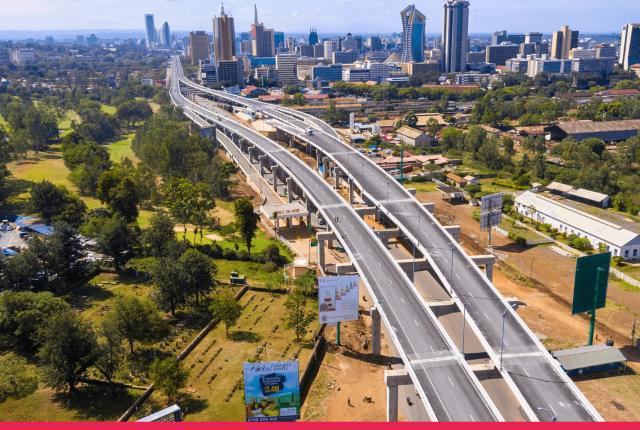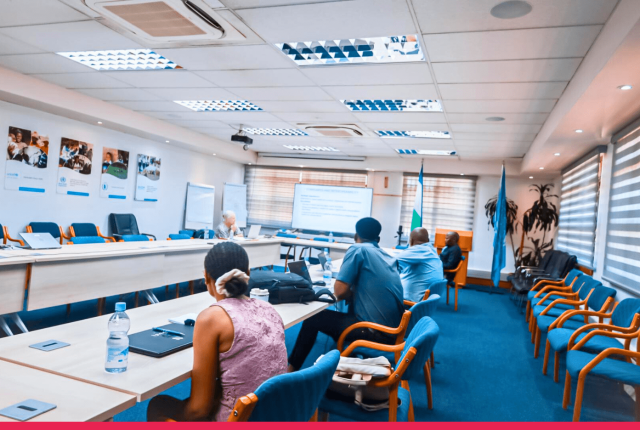
Case Study: Ghana’s e-Government PPP Project – Replicable Success Factors
Africa’s digital transformation is critical to closing its $100 billion infrastructure gap (AfDB), and Public-Private Partnerships (PPPs) are key to this shift. Ghana’s e-Government PPP Project, launched in 2010, stands as a flagship success, revolutionizing tax and business registration processes. By streamlining services, it added 592,000 new taxpayers and cut business registration times from two weeks to three days (World Bank). This case study analyzes the project’s structure, financing, risk allocation, and implementation, highlighting success factors—government commitment, clear scope, stakeholder engagement, and risk mitigation. It offers replicable lessons for initiatives like Kenya’s $25 billion LAPSSET Corridor, addressing pain points for investors, policymakers, and businesses with actionable insights for sustainable PPPs in Africa.
Overview of Ghana’s e-Government PPP Project
Ghana’s public sector, like many in Africa, faced inefficiencies—manual processes, fraud, and delays in service delivery. The e-Government PPP Project, part of the broader e-Ghana initiative, aimed to modernize the Ghana Revenue Authority (GRA) and Registrar General’s Office using ICT. Signed in 2010, it deployed state-of-the-art software and hardware to automate tax filing and business registration, boosting transparency and competitiveness. By 2016, the project was hailed as one of Ghana’s most successful PPPs, broadening the tax base and enhancing service delivery (World Bank).
Project Structure and Implementation
Structure
The project operates as a Design-Finance-Build-Operate-Transfer (DFBOT) PPP, with private partner Ghana e-Services Limited (GeSL) leading implementation. Key components include:
- Infrastructure: Data centers, cloud-based platforms, and online portals for tax and business services.
- Contractual Framework: A 10-year concession with performance-based payments, aligned with World Bank standards.
- Stakeholders: Government of Ghana (GoG), GeSL, World Bank (financing), and local SMEs (subcontractors).
Financing
The $50 million project blended public and private funds:
- Private Capital: 60% from GeSL, leveraging global ICT expertise.
- Public Support: 20% from GoG via policy support and infrastructure access.
- DFI Funding: 20% from World Bank, mitigating private sector risk.
This mix reduced fiscal strain, a model for LAPSSET’s 80% funding shortfall (AfDB).
Risk Allocation
Balanced risk-sharing ensured stability:
- Construction Risk: GeSL bore software development and hardware installation risks, incentivizing efficiency.
- Operational Risk: GoG guaranteed minimum transaction volumes, stabilizing revenue.
- Political Risk: World Bank’s involvement mitigated regulatory uncertainties.
Challenges like intellectual property disputes delayed implementation but were resolved through arbitration, unlike LAPSSET’s ongoing land disputes (Oxfam, 2022).
Implementation
Implementation leveraged Ghana’s 2004 PPP policy:
- Stakeholder Engagement: Over 100 consultations validated the project design (World Bank).
- Capacity Building: Training for 300 GRA staff, with 40% local hires (IFC).
- Technology: Cloud-based platforms cut processing times by 70% (World Bank).
Despite a year-long consultation process and a failed first bid due to the 2008 financial crisis, the project was completed by 2016, a rarity when 40% of African PPPs face delays (World Bank).
Key Success Factors
Strong Government Commitment
GoG’s proactive role—policy reforms, tax incentives, and a dedicated PPP unit—drove success. The 2011 PPP guideline, though not a law, signaled reliability, unlike Nigeria’s delayed railway due to weak policy (AfDB). Ghana’s commitment mirrors Rwanda’s PPP reforms, which attracted $1 billion in FDI (World Bank).
- Lesson: LAPSSET needs Kenya’s 2021 PPP Act enforced to attract investors.
Clear Project Scope
The focused scope—automating tax and registration—avoided overambition. Detailed feasibility studies ensured clarity, unlike LAPSSET’s sprawling $25 billion scope (Vision 2030).
- Lesson: LAPSSET should prioritize high-impact components, like Lamu Port.
Effective Stakeholder Engagement
Extensive consultations with GRA, businesses, and citizens built trust. This contrasts with LAPSSET’s 30% community dissatisfaction in Lamu (Oxfam, 2022). Ghana’s approach aligns with Kigali’s water PPP, which held 60+ meetings (AfDB).
- Lesson: LAPSSET must expand its 50+ Lamu forums to Isiolo and Turkana.
Robust Risk Mitigation
Blended financing and World Bank involvement reduced risks. Competitive bidding ensured transparency, unlike LAPSSET’s funding gaps (AfDB). The project’s legal framework, though not fully developed, followed IFC standards, a practice LAPSSET can adopt.
- Lesson: LAPSSET needs DFI partnerships to secure funds.
Results and Impact
Since 2016, Ghana’s e-Government PPP Project has:
- Broadened Tax Base: Added 592,000 new taxpayers, boosting revenue by 15% (World Bank).
- Improved Efficiency: Cut business registration from two weeks to three days, with plans for one-day processing (World Bank).
- Created Jobs: Employed 500 directly, with 1,000 indirect jobs via SMEs (IFC).
- Enhanced Transparency: Reduced fraud by 20% through digital audits (GRA).
These outcomes support AfCFTA’s trade goals and Ghana’s digital economy ambitions, offering a blueprint for LAPSSET’s trade facilitation aims.
Lessons Learned and Best Practices
Lesson 1: Blend Financing Strategically
The project’s mix of private, public, and DFI funds minimized fiscal strain. LAPSSET can adopt AfDB’s $750 million green bonds to close its funding gap (AfDB).
Lesson 2: Prioritize Governance
Ghana’s transparent framework ensured investor confidence, despite lacking a PPP law (ResearchGate). LAPSSET needs similar clarity to attract $20 billion in private capital (AfDB).
Lesson 3: Engage Stakeholders Early
Extensive consultations prevented disputes, a practice LAPSSET can scale to address Lamu’s protests (Oxfam). Ghana’s model mirrors Niger’s dry port, with 50+ community forums (PPIAF).
Lesson 4: Leverage Technology
Cloud-based systems boosted efficiency, a strategy LAPSSET’s planned fiber optics can replicate (Vision 2030).
Applying Lessons to LAPSSET and Beyond
LAPSSET’s complex scope—ports, roads, pipelines—faces funding, community, and risk challenges. Ghana’s lessons offer a roadmap:
- Government Commitment: Enforce Kenya’s PPP Act, as Ghana’s 2011 guideline did, to attract investors.
- Clear Scope: Focus on Lamu Port to avoid delays, mirroring Ghana’s targeted approach.
- Stakeholder Engagement: Expand forums to all LAPSSET regions, learning from Ghana’s 100+ meetings.
- Risk Mitigation: Secure DFI funding, like Ghana’s World Bank loans, to cover LAPSSET’s shortfall.
These practices can guide other PPPs, like Nigeria’s Second Niger Bridge, ensuring sustainable outcomes (Slideshare.net).
Challenges and Opportunities
Challenges
- Capacity Gaps: Only 15% of African officials are PPP-trained, risking errors (AfDB).
- Legal Framework: Ghana’s lack of a PPP law limits scalability, like LAPSSET’s regulatory gaps (ResearchGate).
- Community Pushback: Initial resistance in Ghana, like LAPSSET’s Lamu protests, required extensive engagement (Oxfam).
Opportunities
- Regional Models: AU’s PIDA can replicate Ghana’s success, boosting FDI by $23 billion (PwC).
- Digital Tools: E-procurement, as in Kenya, enhances transparency (KIPPRA).
- ESG Investment: $53 trillion in ESG funds by 2025 favor well-governed PPPs (UNDP).
Actionable Advice for Stakeholders
- Policymakers: Adopt Ghana’s PPP guidelines—align with IFC standards.
- Investors: Back projects with strong governance, like Ghana’s, ensuring ESG compliance.
- Businesses: Engage in training to win contracts, as Ghana’s 40% local hires did.
- Communities: Join forums to shape projects, as Ghana’s citizens did.
FAQ: Ghana’s e-Government PPP Project
Q: What made Ghana’s PPP successful?
A: Government support, clear scope, engagement, and risk mitigation (World Bank).
Q: How can LAPSSET apply these lessons?
A: Streamline scope, boost engagement, and secure DFI funding, as Ghana did (AfDB).
Q: What’s the biggest PPP challenge?
A: Capacity gaps—only 15% of officials are trained (AfDB).
Conclusion: A Digital Blueprint for Africa
Ghana’s e-Government PPP Project proves PPPs can drive Africa’s digital transformation. Its success—rooted in government commitment, clear scope, engagement, and risk mitigation—offers a replicable model for LAPSSET and beyond. By applying these lessons, stakeholders can address Africa’s infrastructure gap while fostering inclusive growth. Share this post, subscribe for more, or explore PPP opportunities today—Africa’s digital future starts with you.



Leave a Reply